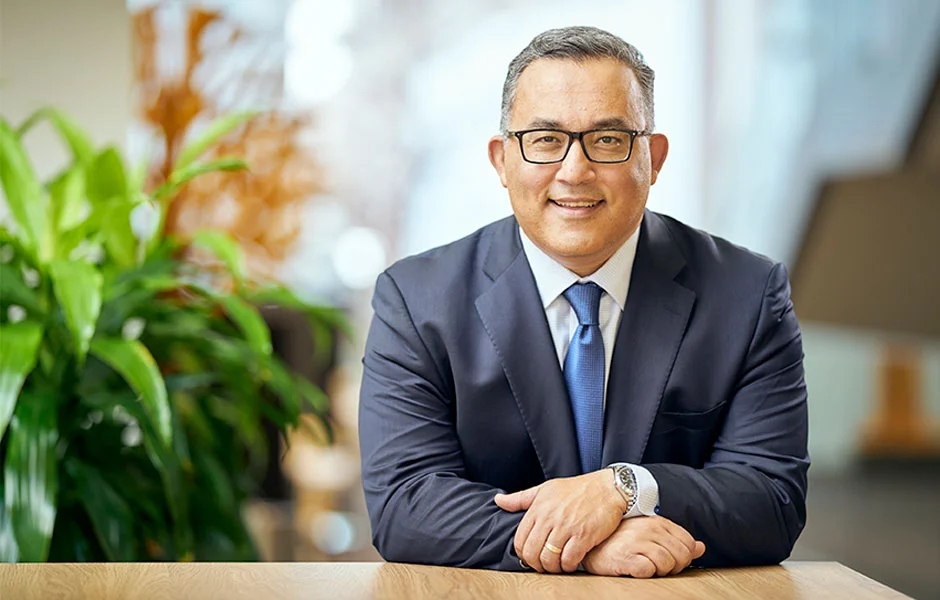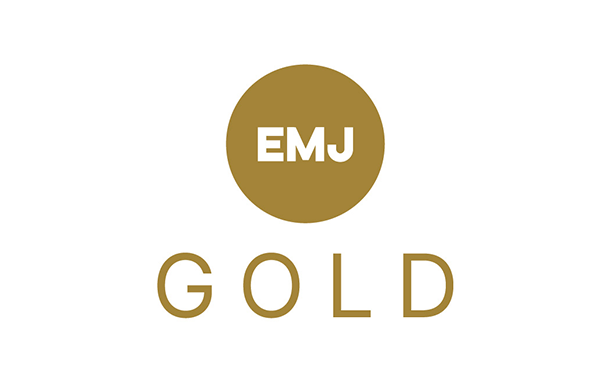Mina Makar, Senior Vice President, Global Cardiovascular, Renal and Metabolism, AstraZeneca, talks to Isabel O’Brien about tackling treatment gaps, how to champion the patient perspective and his core values for leadership
Interview by Isabel O’Brien
Mina Makar has done it all. He made his first professional pitstop in pharmacy, where he put his degree into action by working to solve community health needs, before deciding to take his impact up a notch and tackle patient outcomes en masse.
In the mid-1990s, he moved from behind the counter to the corporate world of pharmaceuticals – his background in pharmacy meant medical affairs was a logical landing place, and he was involved in offering medical affairs support to sales and marketing teams. It wasn’t long, though, until he sought to spread his wings wider still. “I’m a naturally curious person, I love to learn,” he confesses. “I love new experiences, and I love to learn from different people.”
The commercial side of pharma was calling. Makar won a sales role at AstraZeneca on the cusp of the millennium and preceded to bounce from sales to market access to marketing via a range of therapy areas for the next 20 years. His specialisms span respiratory, immunology and cardiovascular.
In 2021, the pharma leader was called up to his current role as AZ’s Senior Vice President, Global Cardiovascular, Renal and Metabolism. “I’ve only been in the job a year, and there’s a lot to accomplish,” he explains, “but I’m excited about what we can do.” He has taken this new role in his stride and works hard both behind the scenes and publicly to improve awareness and outcomes in his disease areas.
For Makar, the opportunity to do this work is why the industry is an exhilarating place to be. “The reason we work so hard, the reason we challenge each other, is because of the moment when physicians feel like they can help patients in a different way than maybe they couldn’t have done a few days earlier,” he says. “That’s just incredibly rewarding.”
What inspired you to start a career in the pharmaceutical industry after your time in pharmacy, and how did that training help on the new career path?
I realised early on after three years in pharmacy that I was inspired and motivated by a couple of key things. One was interactions with patients where you really made a difference, and the second was a fascination with the business – the industry in general. And so, pharmaceuticals became a logical place to go to experience both. In terms of how pharmacy helped, many of my roles have required a lot of understanding of the science. This was a big part of my job as a pharmacist as well as understanding the patient’s perspective and problem solving. So, it has been a tremendous help to me, especially for this recent role where I moved into cardiovascular, renal and metabolic (CVRM). I’d worked a lot in respiratory and other areas before, but this was a new area for me.
Can you tell us a bit more about your varied career journey at AstraZeneca?
In my 22 years at AstraZeneca, there have been a lot of experiences in a lot of different roles. I realised early on in my career that to be an effective senior leader in this industry you have to have breadth of experience. Our business is so complex, and you need to understand all the components of it. So, I’ve gone on a journey to gain experience in medical affairs, marketing, market access and operations as well as global and leadership roles. Medical affairs was one of the most helpful. In addition, I’ve built a really strong foundation and learned a lot about leading large groups. We are a large industry and it’s about being successful through a lot of people. You can’t get much accomplished if you can’t get a whole organisation rallied around a purpose.
Much of your role is about bringing important medicines to people who have limited options. What makes this such a passion project?
It goes back to the reason I came into this industry to begin with: making an impact on patients with scale. When I think about my role now, and all the incredible work we’re doing to change the lives of CVRM patients, I think about the unmet need. It is probably as much or more than almost any other disease. The gap between current care and the right way to manage these patients is wide. For example, 50% of heart failure patients die within five years and the vast majority of chronic kidney disease (CKD) patients at Stage 3 and beyond are still undiagnosed or undertreated.
Our business is so complex, and you need to understand all the components of it
The overlap between heart failure, CKD, diabetes and obesity is also significant, and a lot of therapies don’t address multiple areas and the interconnectivity between them in patients. Identifying the underlying disease drivers and the right targeted precision therapies to address the multiple organs these patients are struggling with is our ambition. We’d like to not only stop but reverse and cure cardiovascular disease.
What role do you and your team play in championing the patient perspective?
Over the years, our view of how we can help patients has really broadened. It used to be a molecule – getting a medicine to market – but now we’re relentless in trying to understand the patient journey. How is a patient dealing with the disease they’re carrying? How are they engaging with the healthcare system? What does that mean for the indications? We need to pursue the question: what does that mean? What does it mean in terms of access? What does it mean from a diversity perspective?
We’d like to not only stop but reverse and cure cardiovascular disease
We now have precision medicines in development such as PNPLA3 that addresses Hispanic and Asian populations who tend to carry that genetic marker more than others. Whether it’s from a diversity, affordability or access perspective, the support we need to provide is understanding where we can step in and really make a difference – not only with the medicine but with everything else that we wrap around that medicine. I’m really proud of what the team has been doing, really looking at that big picture rather than the end result.
What is the key to effectively managing a department and leading innovation, particularly at a company striving to push the boundaries of science to deliver life-changing medicines?
For me, leadership is about three things. First, it is about authentic leadership, which is making sure your team feels empowered and encouraged to constantly be innovating and taking risks – and feel safe taking risks. The second is encouraging curiosity. I’m a curious person, and I want everybody that is working within CVRM to be as curious, because that’s the only way we will ask the right questions and challenge the right thinking. The third is a healthy urgency to move with speed. We are privileged to be able to help the number of patients that we do, and with that comes a responsibility. So, for me, it’s always been about those three things and how they can solve difficult challenges and change a lot of lives.
Looking back at your experience in the pharmaceutical industry, what are some especially defining or memorable moments for you?
There have been many memorable situations along the way. In particular, when I have been involved in launching new first-in-class medicines. A recent example is when we presented the SGLT2 inhibitor results at the European Society of Cardiology. These showed that for the first time we have a medicine that reduces cardiovascular death regardless of ejection fraction, which in heart failure has always been one of the biggest challenges. The reason we work so hard and the reason we challenge each other is for those kinds of moments.
Sometimes, recognising the confidence somebody has in you makes you even more motivated
Then, for me personally, when Pascal Soriot and Ruud Dobber asked me to take this role and lead the global CVRM organisation at AstraZeneca, it was a moment of pride that they had confidence in me to take this very important therapeutic area and develop it and build it for the future. Sometimes, recognising the confidence somebody has in you makes you even more motivated.






